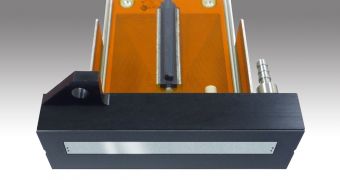OLED panels are really expensive at present, but this situation may not last for very long now that Konika Minolta has released a breakthrough device.
What the company did was build the world's first inkjet printhead capable of printing OLED displays, marking the first step towards roll-to-roll printing of OLED.
It was a long time ago that organic light-emitting diodes were said to be the sort of panel solution that could be printed using an inkjet printer on a roll-to-roll machine.
We may not have exactly reached that era yet, but it is only a matter of time at this point.
Konica Minolta employed silicon MEMS technology in the manufacture of the printhead, the same technology utilized in semiconductor processing.
Long story short, the printhead measures 38mm in width and has 128 nozzles in one row, each capable of ejecting tiny ink drops.
The name is KM128SNG-MB, the drop size is of one picoliter and the ink film is uniform and very thin (100nm).
Additionally, the company optimized its printhead for low viscosity inks, like the ones used in industrial applications, and made sure they were resistant as well.
OLED display patterning, OLED lighting thin film layer coating and other, new manufacturing technologies will act as the proving ground for the product.
Before long, Konica Minolta hopes to enable the manufacture of technologies for high-resolution, high added value displays.
Thus, smartphones should benefit the most in terms of affordability, since they are the gadgets that most often employ OLED, due to its thinness.
Then again, there are 55-inch TVs now too, like the one Samsung moved up from a summer release to launch during spring.
Sample shipments of the printhead will commence within the next two or three months. No clue how long it will take for the effects of this milestone on the IT industry to show.

 14 DAY TRIAL //
14 DAY TRIAL //